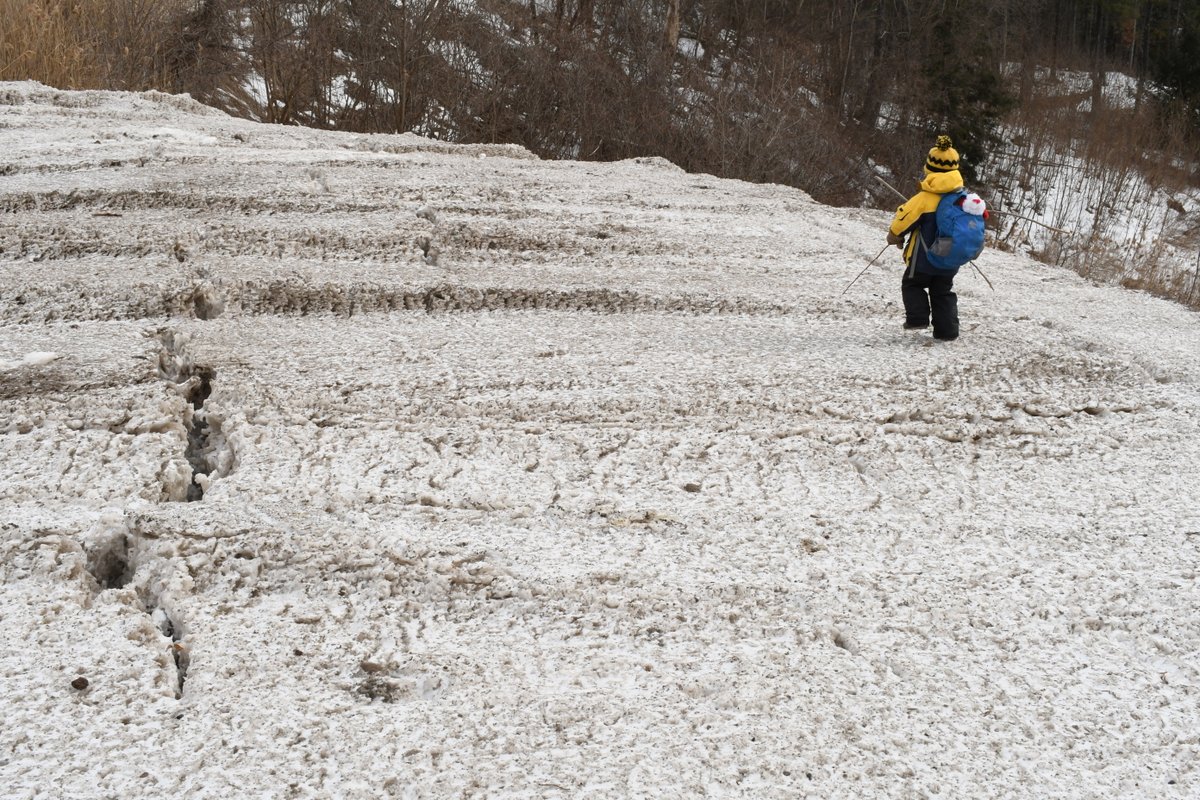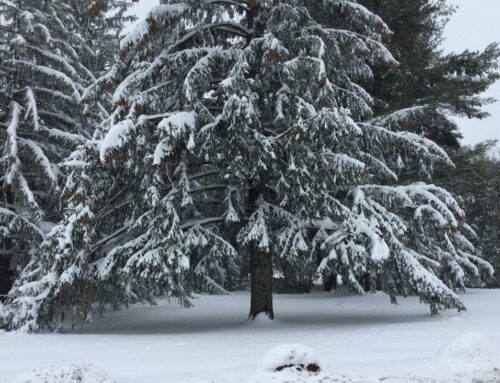Burlington has been free of glaciers since the land that’s now Burlington was free of the Champlain Sea some 10,000 years ago. And glaciers won’t be showing up any time soon. We do, however, have what my son and I call the Big Ugly Snow Pile (or Buspy Brown for short, see image below for its distinctive brownness). It’s an impressive mound of snow that accumulates mass with each new storm as a parade of snowplows dump load after load of snow onto the pile to clear the city streets. As if its bigness or brownness wasn’t enough to elevate it to the stature of greatness, the mass of ice essentially moves and acts like a glacier!


What is a glacier?
Glaciers form in areas where there’s more snow accumulating in each year than there is snow melting. The lucky snow flakes fortunate enough to survive into their second year are collectively called firn. Like fresh snow, firn is fluffier than ice, with open air spaces where gases can move freely about. Below the layer of firn lies a layer of dense, compressed glacier ice, which – like Swiss cheese – is interspersed with small pockets of air (these air pockets hold the key to understanding changes in earth’s atmosphere over hundreds to thousands of years: see, for example: link). In thinner glaciers (<150′ deep), the glacier is like the inside of a Butterfinger bar: when you bend it, the brittle layers snap apart.
On a tour of Seward Glacier in Alaska, I was told that 10″ of snow will yield about 1″ of glacial ice. A good estimate, though not entirely true. Dry (or really cold snow) is fluffier than wet (or warm snow), so it takes about 10″ of wet (around 32oF) snow to make 1″ of ice, and 50″ of really cold (-10oF) snow to make 1″ of ice. Regardless of what type of snow we get, Burlington is just too warm (average temps around 44oF) and too dry (~80″ of snow per year) to ever get glaciers. Except our good friend Buspy Brown.

As I mentioned above, the best part about Buspy Brown is that it behaves much like a glacier. While there are two forces that drive glacial movement, Buspy is only subject to one of them:
Basal sliding
You can melt ice using heat and/or pressure (called regelation). So when you pile layer after layer of ice on top of each other, eventually the weight creates enough pressure on the ice at the bottom of the glacier that this ice eventually melts. This layer of meltwater creates a lubricating layer that helps ice to move over the landscape (think a bar of soap that’s wet on the bottom). Basal sliding is particularly common on steeper slopes with glaciers that are less than 150′ deep (this is called the Zone of Brittle Flow, like that Butterfinger above). As the glacier moves, the top layers, which are brittle, are prone to crack apart, creating fissures and crevasses in the surface (see image above). These crevasses only ever extend down to the limit of this zone (~150′). Below this, the ice acts like a plastic. In one study in Switzerland, the researchers found that the glacier moved by basal sliding at a rate of between 12 to 150 feet per year (source).
Plastic flow
Deeper ice (>150′ thick) begins to move more like a viscous liquid. Under even more intense pressure at much greater depths of ice, the bonds between molecules can be stretched rather than broken. In these conditions, the forces acting on the ice are similar to a blacksmith heating metals to bend and mold them into swords and nails. The Burlington Glacier is far too small for these forces.

Our Burlington Glacier is thin, likely only 20′ or so at its deepest. It’s one slab of brittle ice, slowly moving by basal sliding. We can see the brittle solid nature of the ice in the fractures forming up at the surface, a clear indication that the ice is indeed “flowing” and stretching as it’s drawn down the slope under its own massive weight. Okay, so technically this is not a glaciers (it will be gone by April), but still cool to see the same dynamic processes at play here in the city!
I wish I’d done this sooner, but I’ve set up a trail camera on the Burlington Glacier to hopefully catch its movement in action (see image at top – I even put a marker in the ice to help visualize its movement over time).




